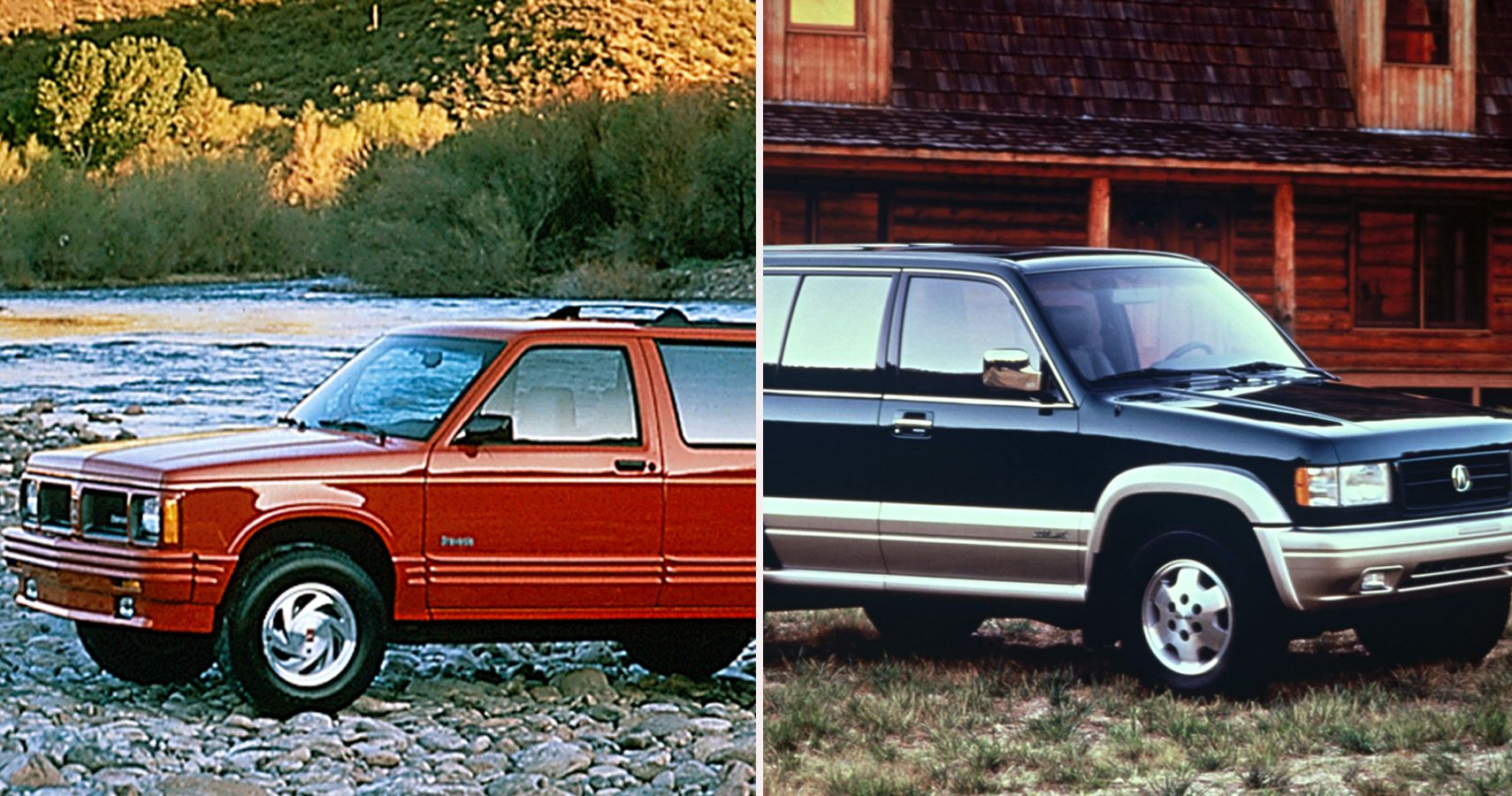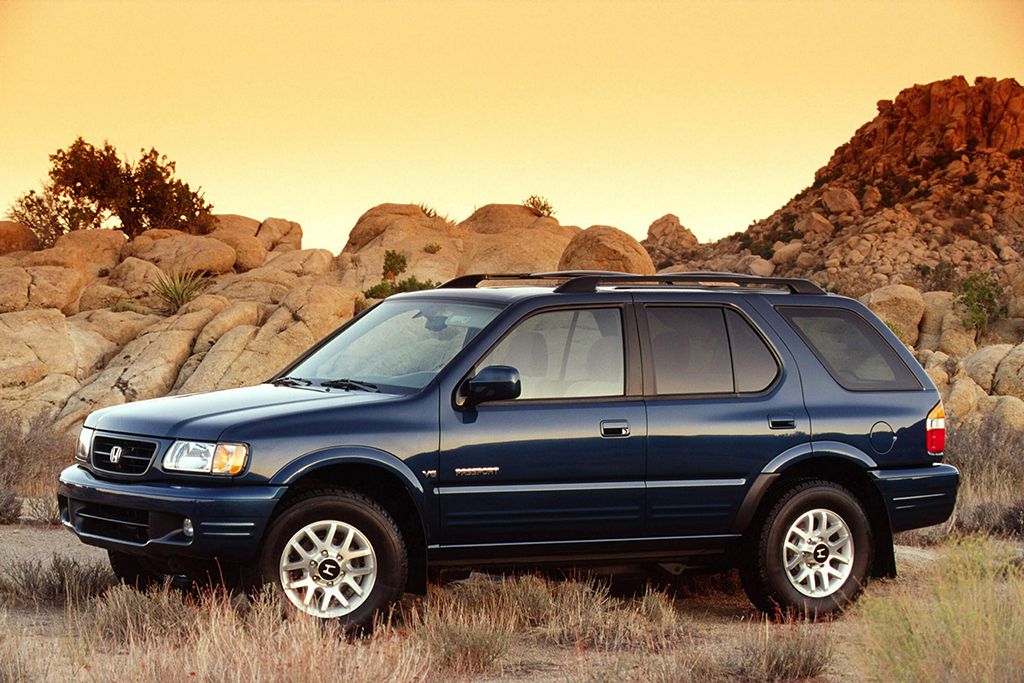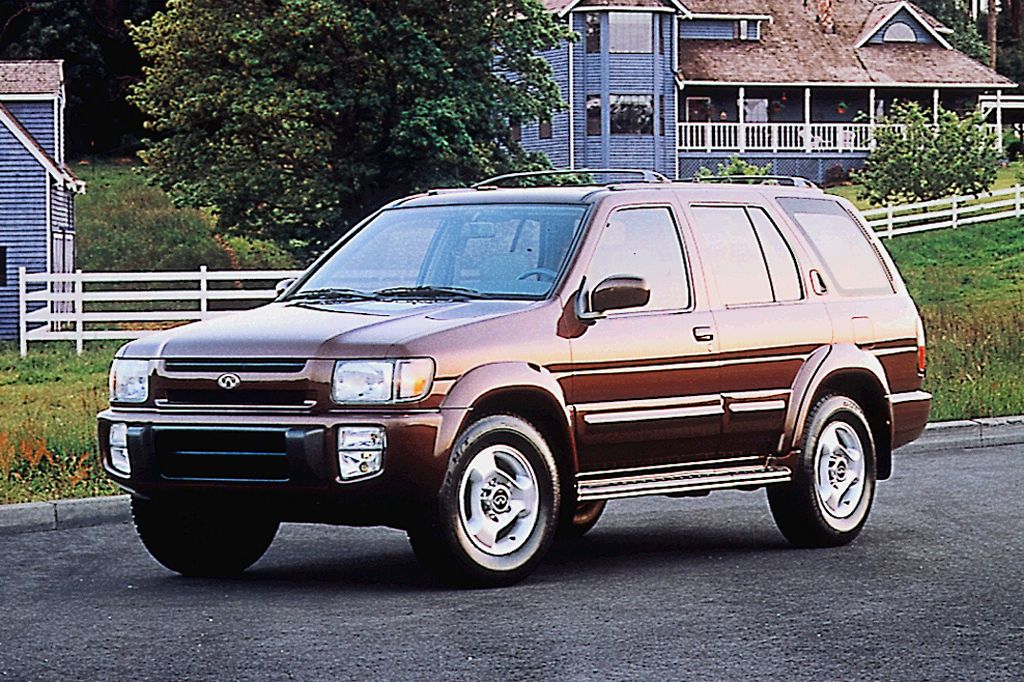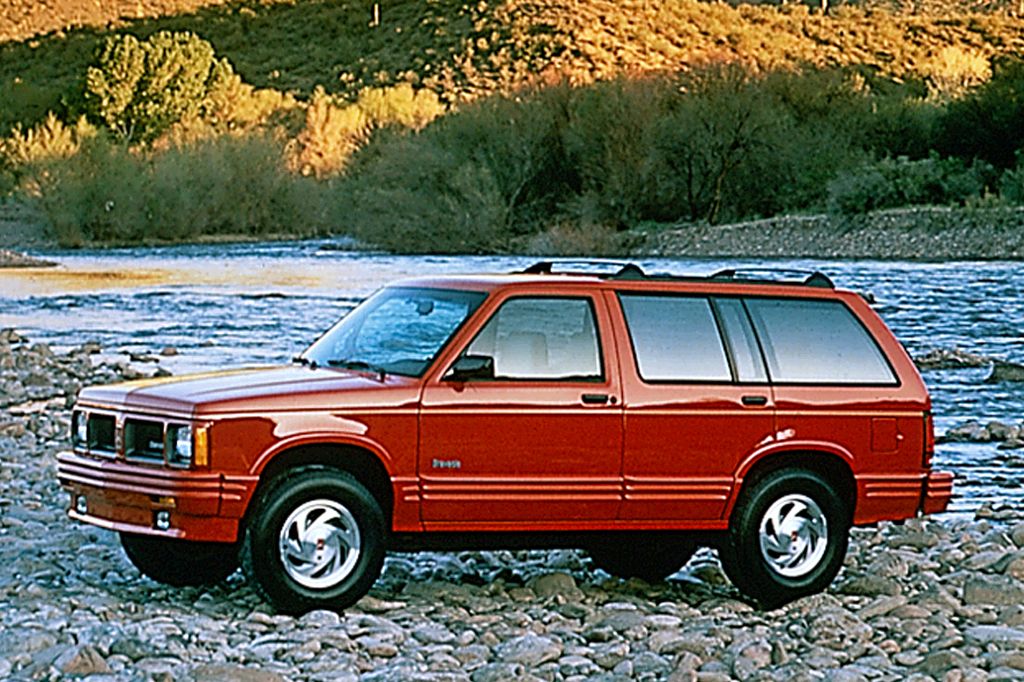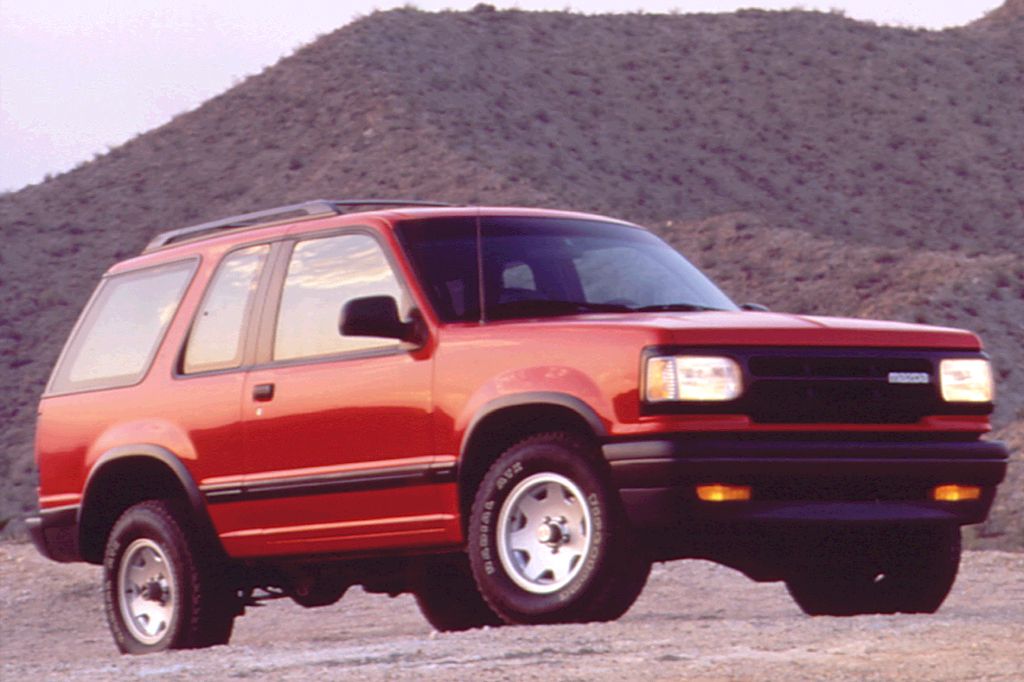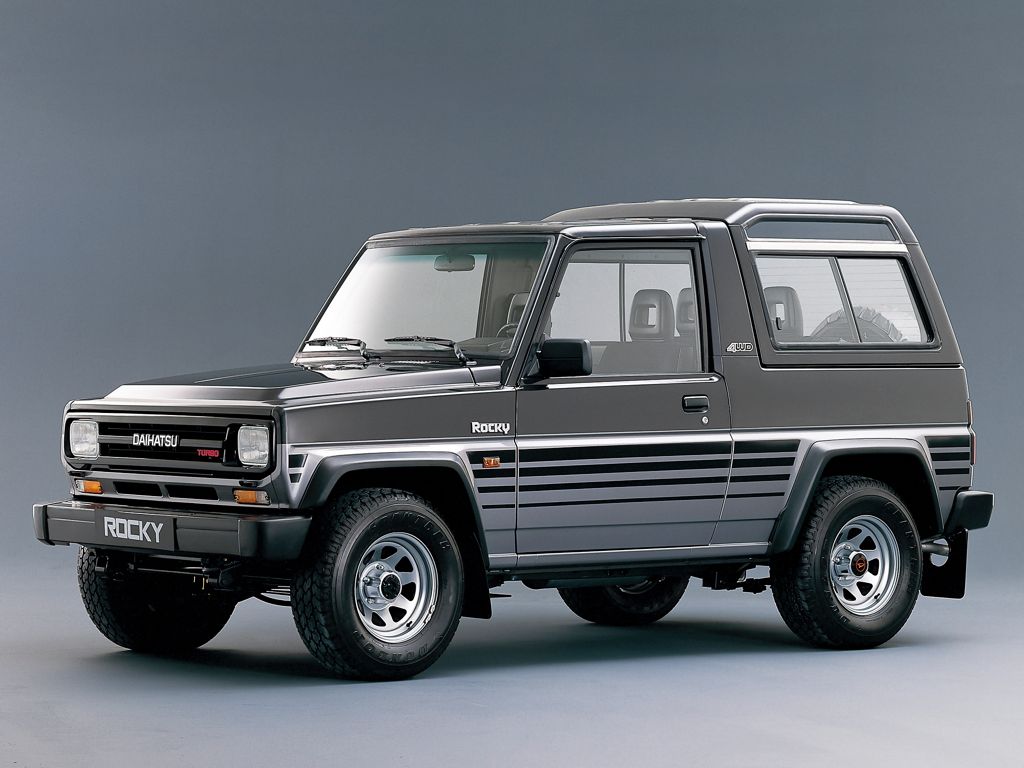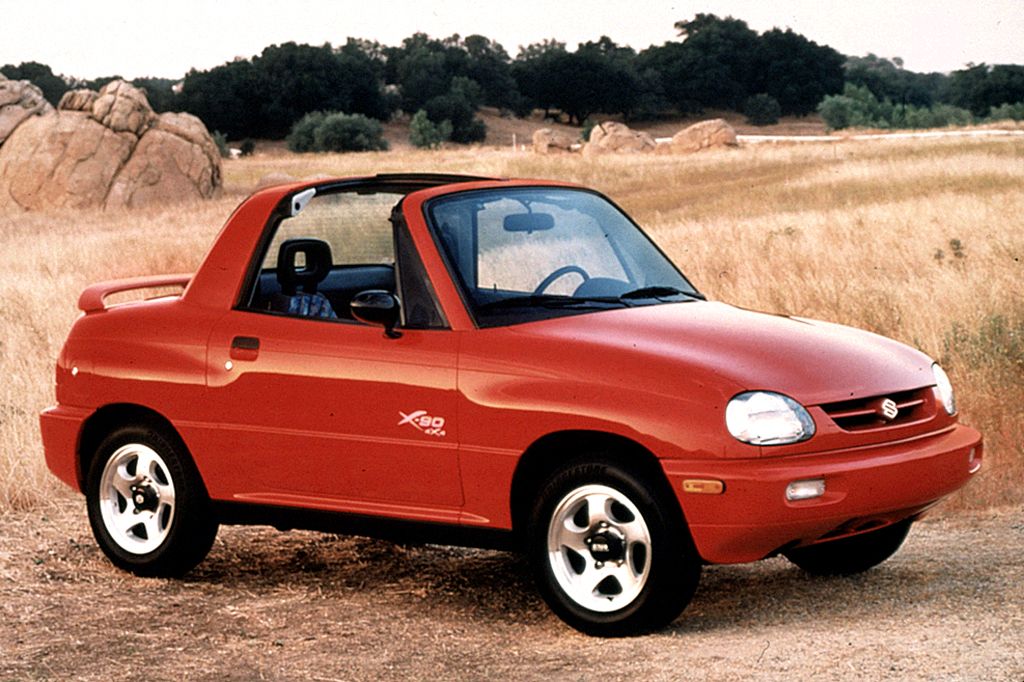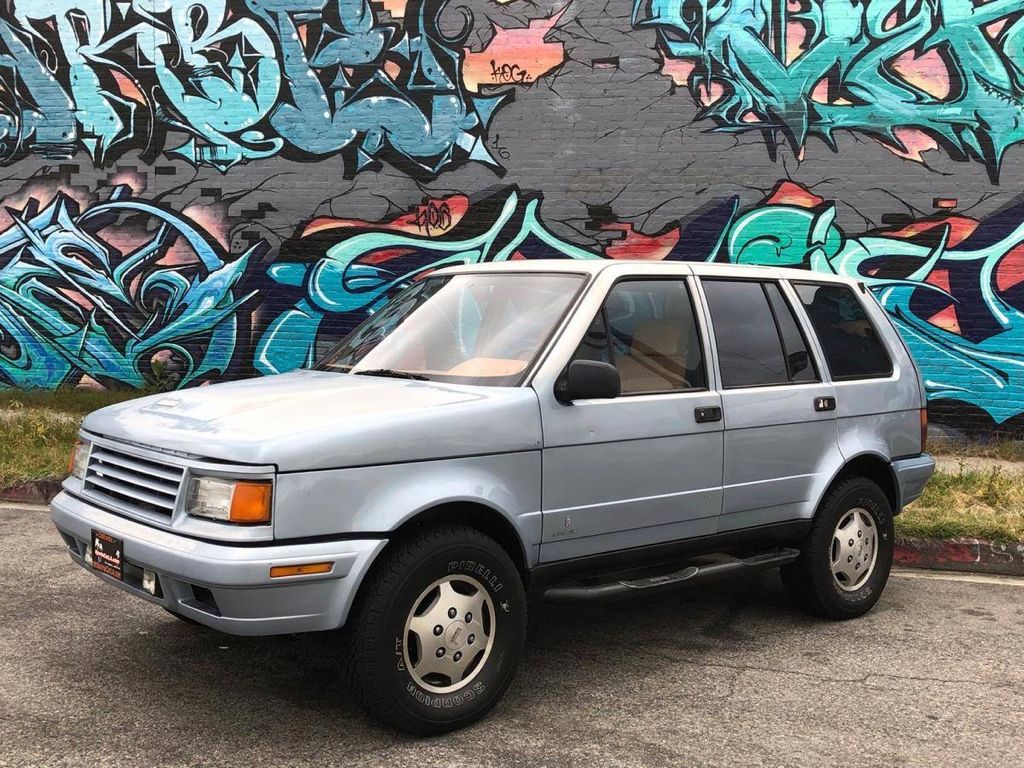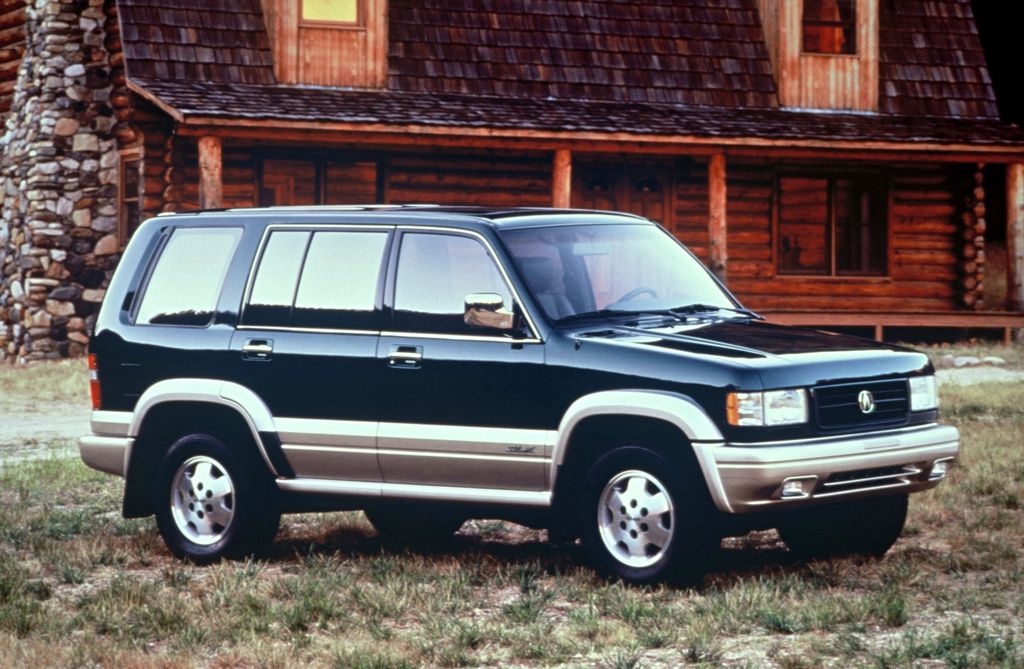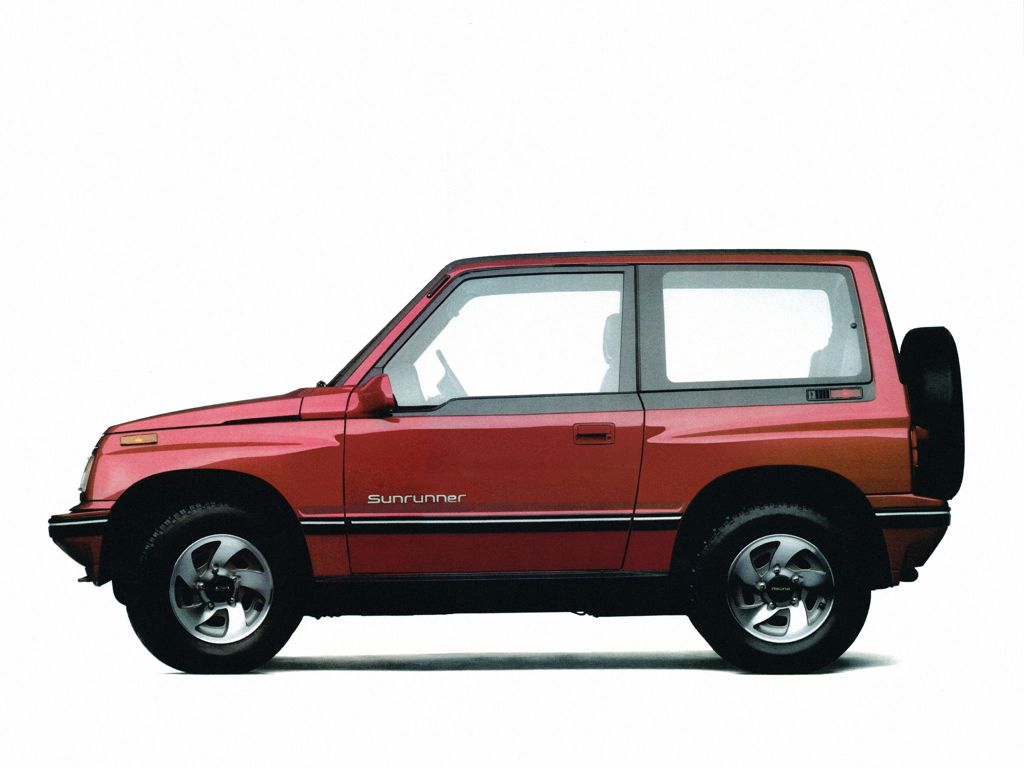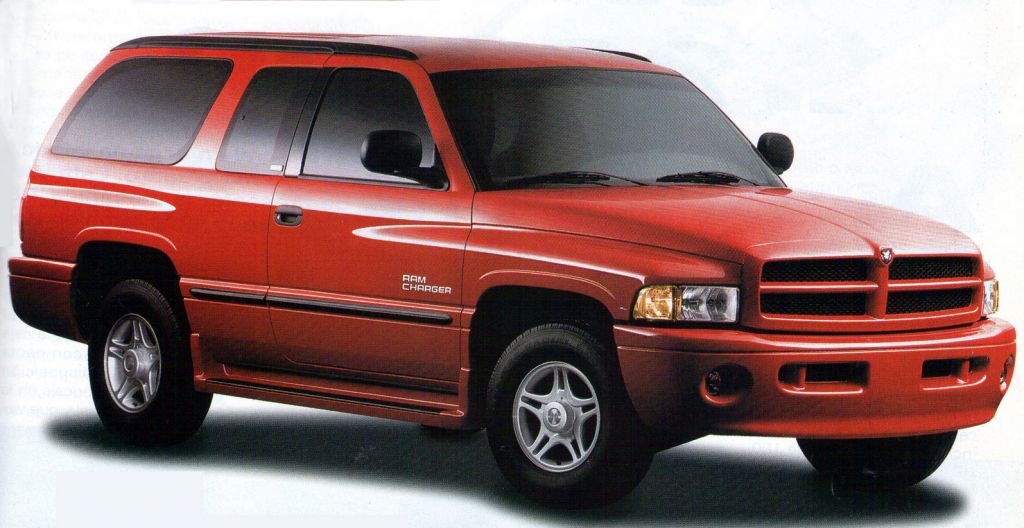In the mid-80s, Jeep reinvented the modern SUV, twice. In 1984, the XJ Cherokee put all-wheel-drive capability into a smaller unibody package with rugged good looks and the availability of two or four doors. Three years later, the YJ Wrangler took the utilitarian CJ and made it easier to live with day to day. A lot of car-makers took notice of their popularity, and began rushing their own models into the marketplace.
By the 90s, the number of SUVs offered in North America was growing, and they covered both the high and low ends of the market. Many of the vehicles on this list were badge-engineered models designed to quickly fill a perceived niche, and left the market as quickly as they entered, only to be forgotten. Until now.
10 Honda Passport
The arrival of the new-for-2019 Passport SUV is a reminder that Honda used to sell another SUV by that name, starting way back in the 1994 model year. The old-school Passport hung Honda logos and a slightly different grille on Isuzu’s Rodeo, and was built alongside the Rodeo in Indiana. In exchange, Isuzu got the first-generation Honda Odyssey minivan, which it called the Oasis. But that’s a different list.
Honda’s first Passport was a competent truck-based SUV, but a bit cruder than the competing Ford Explorer and Chevy S-10 Blazer. Honda replaced the first-generation Passport with the Accord-based Pilot in 2002.
9 Infiniti QX4
By the mid-90s, Toyota had figured out it could bring more shoppers into Lexus showrooms by rebadging the world-beating Land Cruiser, and the LX450 was born. The folks at Nissan saw that happen, and decided they could do the same thing for their luxury imprint. They responded by upholstering their capable second-generation Pathfinder in wood and leather, reshaping the front end and alloy wheels, and calling it the Infiniti QX4.
However, badge-engineering was a lot less sophisticated in the 90s than it is today, and few cross-shopping SUV buyers could overlook the Infiniti’s humble roots. The QX4 soldiered on for a few years until being replaced by the FX-series muscle-SUV.
8 Oldsmobile Bravada
When it comes to clumsy badge-engineering, however, few companies in the 90s could match the team at General Motors. And when the Bravada rolled out in 1991, its only real cosmetic differences from the S-10 Blazer/Jimmy involved a split grille, little Olds “rocket” logos in the taillights, and a familiar GM styling device: plastic lower-body cladding. The interior was nicer, of course, and its SmartTrak automatic AWD was not shared with the other divisions, but that was about it.
And apparently it was enough to justify its existence, because GM sold Bravadas (Bravadae?) through three generations, in an attempt to cover the upper end of the midsize SUV market. Eventually, the Bravada died with Oldsmobile in 2004, but its sheetmetal lived on as the Buick Rainier.
7 Mazda Navajo
When the compact pickup market took off in the early 1970s, Ford sold Mazda’s B-series truck as the “Courier.” It made sense, since at the time Ford owned about a third of the Japanese carmaker. Two decades later, the tables were turned, and Mazda turned to its benefactor for a version of the then-new first-generation 1991 Explorer.
What resulted was the Navajo: a handsome midsize SUV in the buyer’s choice of two trim levels (DX and LX), a manual or automatic transmission … and just one body style: the two-door wagon. Ford, knowing it had a winner on its hands, kept the four-door for itself, thereby limiting the Navajo’s appeal. Mazda’s first SUV was gone by ’94.
6 Daihatsu Rocky
This diminutive Japanese carmaker — now a division of Toyota — once had grand designs of being a player on the world stage. And for a very few years between 1988 and 1992, that included selling cars in the U.S. Blame the Japanese “bubble economy” in part for the swift exit from North American shores.
But before it left, Daihatsu managed to bring over a few thousand copies of its rugged little Rocky. Aimed at Suzuki’s Samurai and Sidekick and the Jeep Wrangler, the Rocky brought pleasantly chunky styling and Daihatsu’s excellent reputation for reliability … offset by an underpowered four-cylinder engine and an uncomfortable ride.
5 Suzuki X90
It’s hard to imagine the illicit substances Suzuki’s product planning executives must have been ingesting when they came up with the idea for the X90. Based on the Vitara/Sidekick and replacing the rollover-prone Samurai in the carmaker’s US lineup, the X90 had just two doors, two seats, a tiny sedan-like trunk instead of a hatch, and removable T-top roof panels … all riding at the height of a small SUV.
The proportions are completely weird; it looks like a two-door coupe as seen through a fun house mirror. Unfortunately, the experience for the X90’s owners was far from fun, as its anemic 95-horsepower engine and stunning lack of utility made it one of those cars owners got sick of in about the time it took to depreciate, which was about a second and a half. Rolled out worldwide between late 1995 and the spring of ’96, the X90 was dead just four years later.
4 Laforza
The small Italian carmaker Rayton-Fissore was formed by the daughter of onetime coachbuilder Bernardo Fissore. She and her husband had the bright idea to turn an off-road chassis from truck maker Iveco into an Italian response to the Range Rover. Their first good move was hiring Tom Tjaarda, the man who designed the deTomaso Pantera, to draw it. Their second good move was bringing it to the U.S. in 1989 with Ford’s bulletproof 5.0-liter V8 under the hood, and plenty of sumptuous leather inside.
However, the charms of the Laforza (Literally, “the power” in Italian) — its sleek good looks, luxurious interior and profound off-road capability — were bedeviled by quality-control issues and financial problems at the home office’. The Laforza would re-appear on these shores three more times through the 90s under different owners, but few were sold.
3 Acura SLX
One of the first Isuzu-badged vehicles to make an impression in the U.S. in the early 80s was the Trooper, a utilitarian four-wheel-drive vehicle very much in the mold of the Toyota Land Cruiser and the Nissan Patrol. As Isuzu’s profile increased in North America, the Trooper became more luxurious and capable. And during the same time that Isuzu was supplying rebadged Rodeos to Honda, it agreed to give a slightly re-styled Trooper to Honda’s luxury division to sell as the SLX.
Of course, being an Acura, it over-indexed in the wood-and-leather department, and positioned itself as an alternative to the Lexus LX. However, concerns about rollover risk put the SLX next to the Trooper on Consumer Reports’ Not Acceptable list ... and it was replaced by the MDX crossover in 2001.
2 Asüna Sunrunner
GM went through a couple of different strategies for selling captive imports during the 90s. It created the Geo brand as an umbrella for Chevrolet’s small cars from Suzuki, Isuzu and the NUMMI joint venture with Toyota... until the division just decided to call them “Chevys.”
In Canada, where Chevrolet and Pontiac dealers had basically the same model lineup because of GM’s highly regional selling strategy, Pontiac got its own version of the Geo/Chevy Tracker/Suzuki Sidekick. And because Chevy had Geo, Pontiac had “Asüna” ... for about two years, until GM Canada threw in the curling broom and decided to call the Sunrunner a Pontiac.
1 Dodge Ramcharger
Yes, the original Dodge Ramcharger — the one based on the slab-sided D-series truck starting in 1974 — died off by the early 90s, ahead of 1994’s groundbreaking Ram trucks. Chrysler worried that a new Ramcharger would cannibalize sales from the Jeep Grand Cherokee and (eventually) the Dodge Durango. But while two-door full-size SUVs were waning in popularity in the U.S., they still sold well in Mexico.
So as the 90s came to a close, Chrysler Mexico offered a two-door Ramcharger that was basically an extended-cab Ram pickup without the rear half-doors, and an enclosed rear area with components borrowed from the company’s minivans (the contemporaneous Durango did the same thing). The styling is a little ungainly, but it was distinctive. However, Mexican buyers eventually soured on two-door SUVs just as buyers in the U.S. had, and the Ramcharger was gone for good in 2001.

